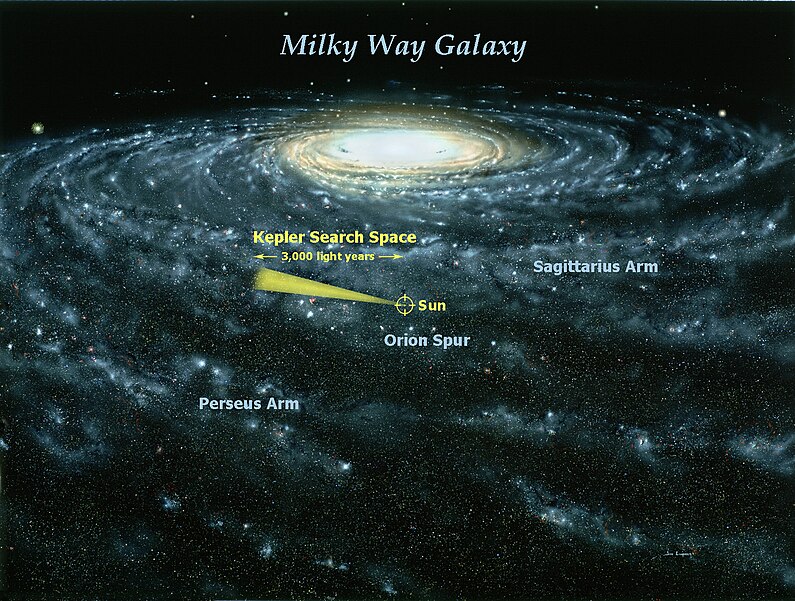After finding extrasolar planets, discovering extrasolar moons
Wednesday, June 11, 2008

No, an extrasolar moon hasn't been discovered yet but there was a piece on space.com today about the possibility. It seems that it's certainly not beyond the realm of possibility:
While the number of confirmed extrasolar planets is now approaching 300, the tally of extrasolar moons so far identified is still a rather disappointing zero.
Planets beyond our solar system are incredibly challenging to find. Moons are nearly impossible with today's technology, given that they are generally expected to be quite small compared to their parent worlds.
Even Earth's moon is invisible on the famous "pale blue dot" image obtained by Voyager 1 from the comparatively small distance of 3.7 billion miles — a photograph taken from well within our solar system.
But the search is not impossible, says Darren Williams, associate professor of physics and astronomy at Penn State Erie, the Behrend College. Williams believes a moon in orbit around a known extrasolar planet will also be detectable if we look hard enough with the right techniques.
Of course, that makes sense given how large some moons can be. Titan for example is larger than Mercury (though less massive), and more interesting: it has an atmosphere thick enough that apparently a person on the planet could fly simply with a pair of wings (thick atmosphere + low gravity = easy to fly).
So far the largest moon we know of is Ganymede:
which is slightly larger and more massive than Titan, for a total mass about 1/40th of that of the Earth. The smallest extrasolar planet we've discovered so far is three times the mass of the Earth, so that means we'll need 120 times the precision to identify a moon the size of Ganymede, but of course there's no reason why there couldn't be larger moons out there, so the discovery of the first one should come sooner rather than later. Some more from the article:
Williams has modelled an Earth-like planet with moons of varying sizes and concluded that satellites as small as Earth's moon could be detectable in the infrared data, owing to their large surface temperature variations. By studying an extrasolar planet and building up a picture of that world's infrared output, any sizable moons present should be detectable in this way. So far, however, no planet as small as Earth has been detected around another star. But astronomers expect that barrier to be broken soon. Future missions, such as NASA's Terrestrial Planet Finder and The European Space Agency's Darwin, will have the ability to return the valuable data required both for finding other Earths and, Williams figures, some moons. "The present goal is to build instruments capable of seeing something as large as the Earth or possibly Mars. Smaller Mercury- or Titan-sized objects fall below that first-order threshold," Williams said. So could these missions cut to the chase and spot an extrasolar moon directly? "They might, if the light collectors are big enough and if the moons are big enough. It will be easier to see moons that happen to transit the face of a star, such as what the space telescope Kepler will attempt to do starting next year," Williams explained. The space-based Kepler observatory will note dips in starlight caused by planets crossing in front of stars. If the planets are aligned in such a favourable manner, then thinking goes, moons ought to transit the stars too. A similar conclusion is reached by Szabó, Szatmáry, Diveki and Simon in a paper published in Astronomy and Astrophysics in 2005. They conclude that the Kepler mission should identify a few extrasolar moons using this method of detection.
Yes, Kepler. No upcoming mission is more exciting than this. Launching February 2009, and made to do nothing but search for extrasolar planets.
An image on Wikipedia shows just how small this search area is in the grand scheme of things in spite of all the observations it's going to make:

See that tiny shaft of light? That's the area Kepler will be searching. The rest is the rest of the galaxy. One galaxy out of some 400 billion others.







1 comments:
it is really awesome, how your picture of the solar system resembles the shape of a hurricane!
Post a Comment